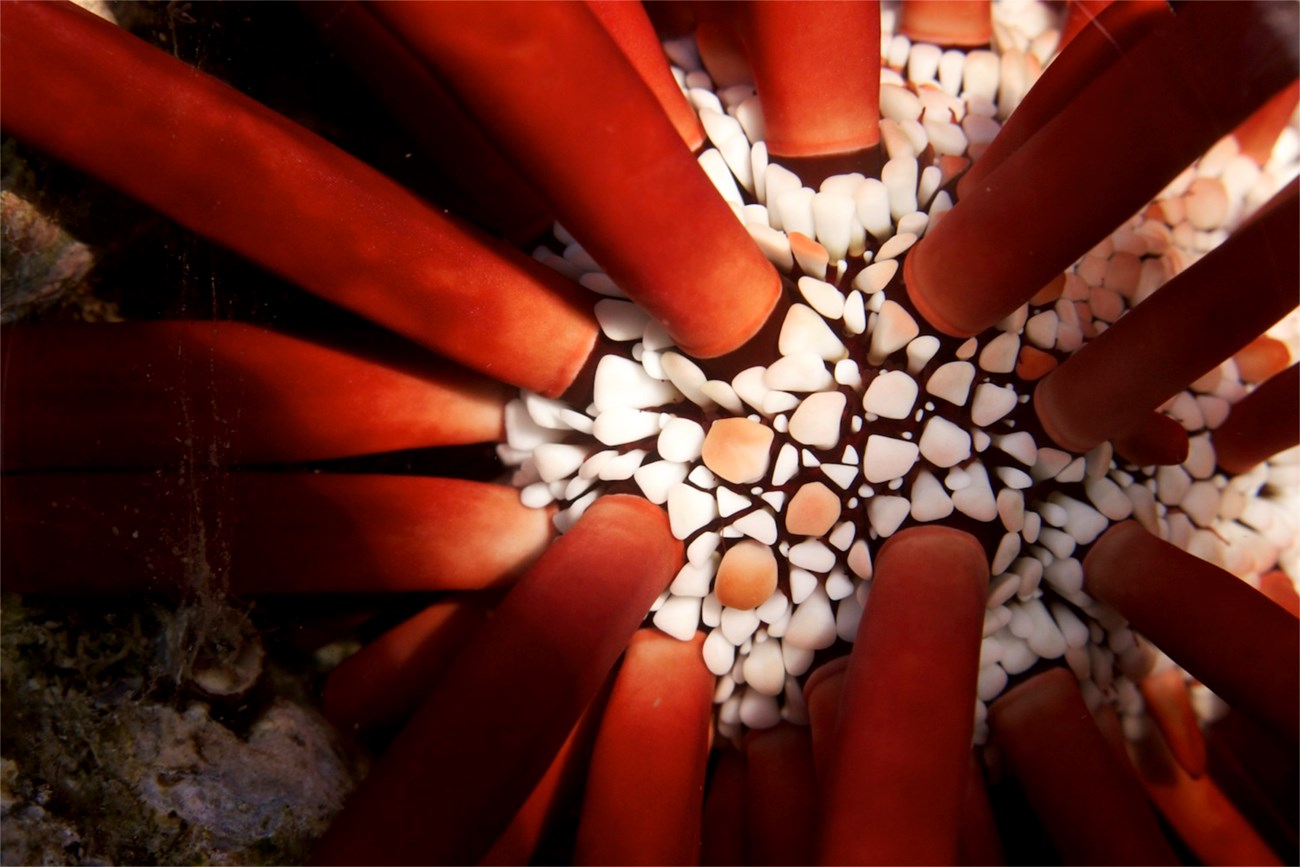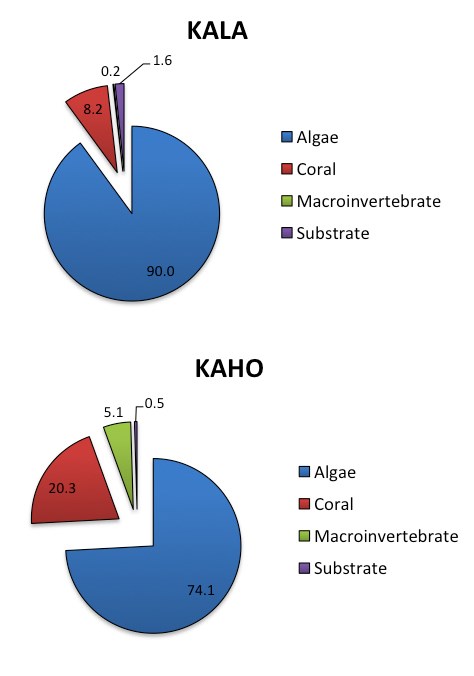Last updated: September 12, 2022
Article
Algae Grazers Help Clean Up

The National Park Service Pacific Island Network Inventory & Monitoring Program began monitoring marine benthic (seafloor) and marine fish communities at Kalaupapa National Historical Park (KALA) and Kaloko-Honokōhau National Historical Park (KAHO) in 2006 and 2007, respectively. Results from these efforts have indicated that KALA has a more substantial fish assemblage in terms of biomass (total fish weight) compared to what has been observed at KAHO (Figure 1). At the same time coral cover at KAHO is substantially higher with less algal cover than what is seen at KALA (Figure 2).
The unique marine assemblages at these coastal parks provide an excellent opportunity to study nutrient inputs into nearshore waters, and its influence on benthic communities and the associated fish assemblage. Damaging algal blooms, a growing problem for Hawaii’s coral reefs, have been linked to man-made nutrient inputs from land. As coastal land-use and nutrient inputs increase over time, grazing by fish, urchins, and turtles may naturally control algal growth and stem reef decline. These results and potential controlling factors have stimulated research questions such as:
- What factors help explain why KALA has higher algal cover AND higher fish biomass, particularly herbivore biomass, which should theoretically keep the algae in check?
- Would the larger human population adjacent to KAHO result in higher nutrients within park waters?

To begin addressing these research questions, the University of Hawai‘i at Hilo (UH) teamed with the NPS to investigate the response of algae to nutrient inputs, and the ability of grazers to control algal growth.
From 2011 to 2014, experiments were deployed at KAHO and KALA to investigate and compare: (1) nutrient inputs to the reef, (2)algal response (growth) to the inputs, (3)grazer communities, and (4) grazer control(consumption) of algal growth.

Preliminary results have documented significantly higher nitrate + nitrite concentrations at KAHO, and significantly higher ammonium concentrations at KALA. Phosphate concentrations were elevated for certain study stations at both parks. Nutrient source determination using stable isotope analysis is currently underway, helping scientists to understand specific sources of nutrient inputs to the reef.
In addition to differences in the fish assemblages between the two parks, UH researchers found that urchin densities were very low at KALA. However, reef substrates were dominated by intensively "cropped" algal turf assemblages, indicating that fish are actively consuming algae, and are the primary grazers at KALA. Alternatively, KAHO hosted very high densities of large, roving urchins that vigorously graze algae down to the underlying substrate, resulting in lower algal turf presence. The red pencil urchin (Heterocentrotus mammillatus), was found to be a primary grazer at KAHO. These differences in the overall grazer community structure are important factors in controlling algal growth at each park.
The preliminary results are encouraging and suggest that both nutrient inputs and grazing influence algal growth at both parks. Final results will help the NPS understand what actions are needed to effectively manage these resources.
– K.L. Kramer, UH-Hilo Marine Technician, 2014
